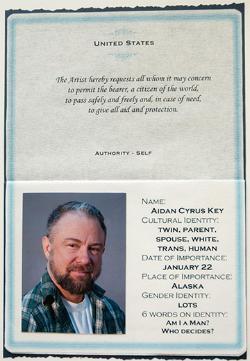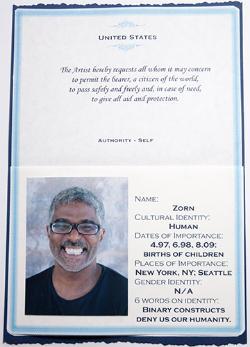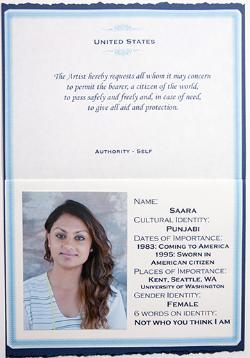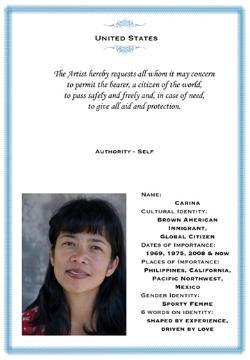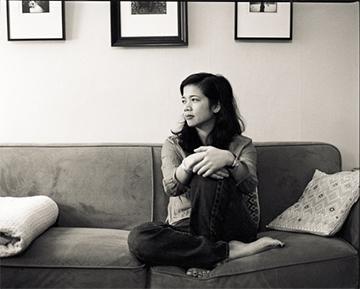
In My Own Words
When I was at Santa Clara (1987-1991) I was pretty focused on becoming a journalist, specifically print. I was editor of The Santa Clara [my senior year]. I have always been really interested in storytelling as a way to cultivate understanding, to bridge and connect communities. But even though in a practical sense, I was studying journalism, I wasn’t really seeing a place for myself in traditional journalism.
The early ‘90s was the first death knell of print journalism. I ended up doing community journalism in Seattle, working for a community newspaper that focused on Asian Pacific American issues. I did your standard reporting on social issues and features, but I felt a little bit like a mercenary—just coming in whenever there was bad stuff happening. I decided to use my communication skills, writing skills and interviewing skills more for specific issues.
I also was turning more to art as a means to communicate, and to teaching. Teaching is what feeds me and keeps a roof over my head. I would now call myself a cultural worker and a teaching artist. I do that both as an independent contractor and as a part-time employee for an arts organization called Arts Corps.
I also worked with people in low income housing units—basically the projects, that the Seattle Housing Authority began selling because [housing developers] had decided oh, this is prime real estate! An art professor at Seattle University (Claire Garoutte) and I partnered with the Yesler Community Center to teach the young people who lived in the community to produce photographs and videos related to the ongoing redevelopment and gentrification the neighborhood.
I also do my own projects that I usually fund out of my own pocket or through grants I have received. One of the projects I worked on for three years is called The Passport Series. The original idea for this project came out of out of another documentary and digital storytelling project I was doing with transgender folks. At the same time this was when there was a big push for the Dream Act.
|
Excerpt from The Passport Series. Photo courtesy Carina del Rosario (©2016). |
In The Passport Series I take the five most common questions that are asked on identity applications and I reframe them to be much more open-ended. Instead of checking a box for race or ethnicity or nationality I asked people their cultural identity, but it’s [still about] filling the blank. I want my participants to use their own words but they must fit on this line. Some people will write really, really small so they can get in more information. Instead of sex or gender I ask for them to tell me their gender identity or expression.
|
Excerpt from The Passport Series. Photo courtesy Carina del Rosario (©2016). |
One of the things that I learned from working with transgender folks is a lot of them did not have identity documents that matched how they presented or how they live their lives, so they were always at risk of discrimination when, for example, they present to a doctor’s office and they are called “John” but they are very much presenting as a female. This tension kind of clicked with me. It was a whole other way that documentation affects people. In order to participate in civil society, you have to fill out these damn forms. That tends to separate us rather than allowing us to express ourselves in our holistic, complex ways.
|
Excerpt from The Passport Series. Photo courtesy Carina del Rosario (©2016). |
I set up these temporary passport offices where I invited people to fill out my reimagined passport application. They [completed the form and] I took a headshot of them. Later on, I assembled it into what sort of looks like a US passport. It was really interesting talking to people about the process. In some instances, it was an opportunity to express yourself. I found younger contributors saying things like, “Why do we even have these categories?”
|
Excerpt from The Passport Series. Photo courtesy Carina del Rosario (©2016). |
The experience [of completing the passport] makes the lesson clear: This is how the US government conferred rights on some people and denied them for others. [For example,] if you were going to mark “Asian” you either we’re not going to be allowed into this country before 1965, or you can’t own property or you can’t marry someone from a different race. This is how society was controlled. Even though affirmative action and other policies try to reverse some of those legacies of structural racism, there is still this emphasis on differentiating between people.
It is interesting to me having more of a communication and journalism background and now doing visual arts. I always loved photography matched with the written word. And I think because I was in the Communication department I was really grounded in the social justice aspects of communication, the power of journalism to educate and to shine a light on things that are either misunderstood or ignored. That is totally steeped in my blood.
Carina del Rosario. Photo courtesy Zorn B. Taylor ©2016.
